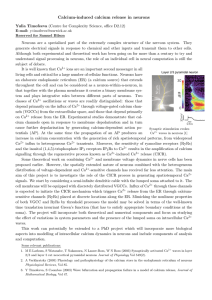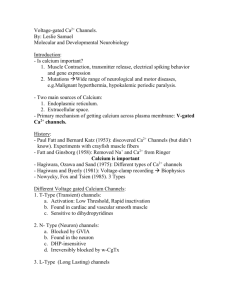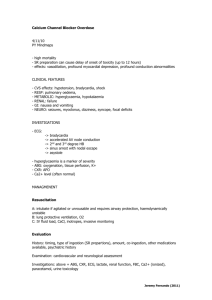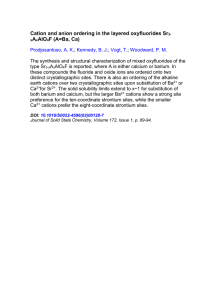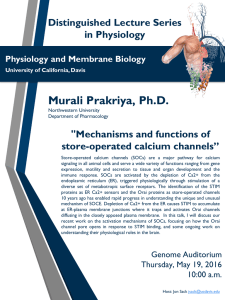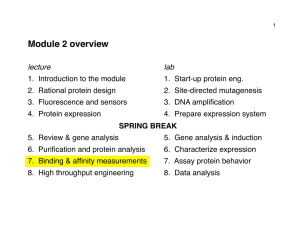Dendritic calcium waves
advertisement
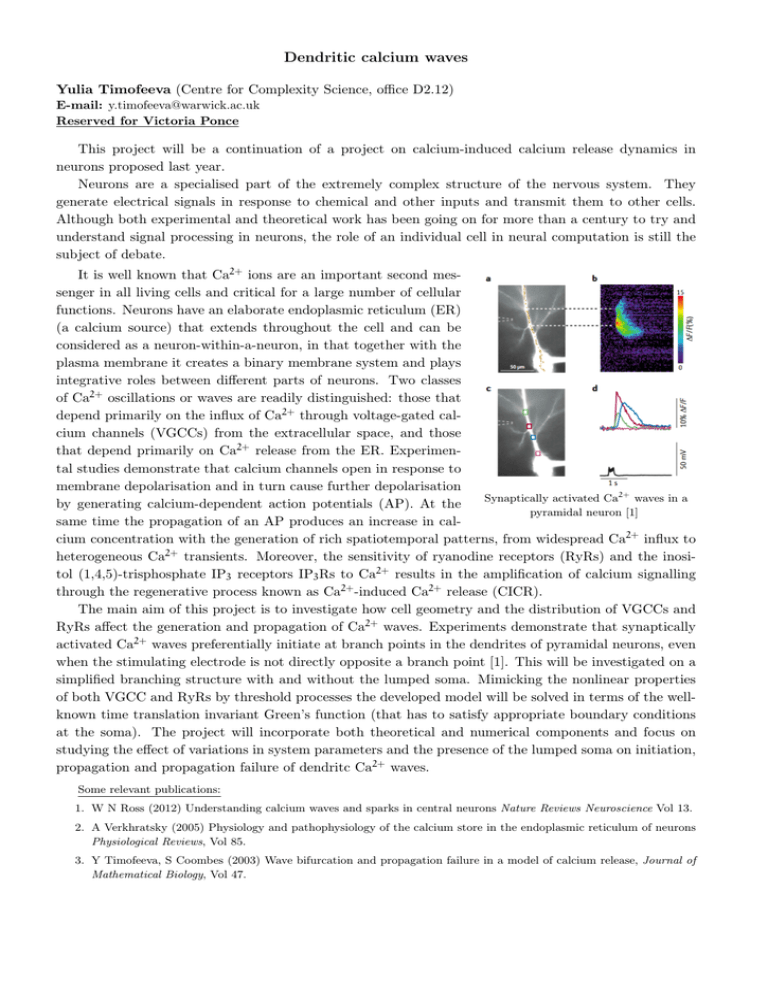
Dendritic calcium waves Yulia Timofeeva (Centre for Complexity Science, office D2.12) E-mail: y.timofeeva@warwick.ac.uk Reserved for Victoria Ponce This project will be a continuation of a project on calcium-induced calcium release dynamics in neurons proposed last year. Neurons are a specialised part of the extremely complex structure of the nervous system. They generate electrical signals in response to chemical and other inputs and transmit them to other cells. Although both experimental and theoretical work has been going on for more than a century to try and understand signal processing in neurons, the role of an individual cell in neural computation is still the subject of debate. It is well known that Ca2+ ions are an important second messenger in all living cells and critical for a large number of cellular functions. Neurons have an elaborate endoplasmic reticulum (ER) (a calcium source) that extends throughout the cell and can be considered as a neuron-within-a-neuron, in that together with the plasma membrane it creates a binary membrane system and plays integrative roles between different parts of neurons. Two classes of Ca2+ oscillations or waves are readily distinguished: those that depend primarily on the influx of Ca2+ through voltage-gated calcium channels (VGCCs) from the extracellular space, and those that depend primarily on Ca2+ release from the ER. Experimental studies demonstrate that calcium channels open in response to membrane depolarisation and in turn cause further depolarisation Synaptically activated Ca2+ waves in a by generating calcium-dependent action potentials (AP). At the pyramidal neuron [1] same time the propagation of an AP produces an increase in calcium concentration with the generation of rich spatiotemporal patterns, from widespread Ca2+ influx to heterogeneous Ca2+ transients. Moreover, the sensitivity of ryanodine receptors (RyRs) and the inositol (1,4,5)-trisphosphate IP3 receptors IP3 Rs to Ca2+ results in the amplification of calcium signalling through the regenerative process known as Ca2+ -induced Ca2+ release (CICR). The main aim of this project is to investigate how cell geometry and the distribution of VGCCs and RyRs affect the generation and propagation of Ca2+ waves. Experiments demonstrate that synaptically activated Ca2+ waves preferentially initiate at branch points in the dendrites of pyramidal neurons, even when the stimulating electrode is not directly opposite a branch point [1]. This will be investigated on a simplified branching structure with and without the lumped soma. Mimicking the nonlinear properties of both VGCC and RyRs by threshold processes the developed model will be solved in terms of the wellknown time translation invariant Green’s function (that has to satisfy appropriate boundary conditions at the soma). The project will incorporate both theoretical and numerical components and focus on studying the effect of variations in system parameters and the presence of the lumped soma on initiation, propagation and propagation failure of dendritc Ca2+ waves. Some relevant publications: 1. W N Ross (2012) Understanding calcium waves and sparks in central neurons Nature Reviews Neuroscience Vol 13. 2. A Verkhratsky (2005) Physiology and pathophysiology of the calcium store in the endoplasmic reticulum of neurons Physiological Reviews, Vol 85. 3. Y Timofeeva, S Coombes (2003) Wave bifurcation and propagation failure in a model of calcium release, Journal of Mathematical Biology, Vol 47.
